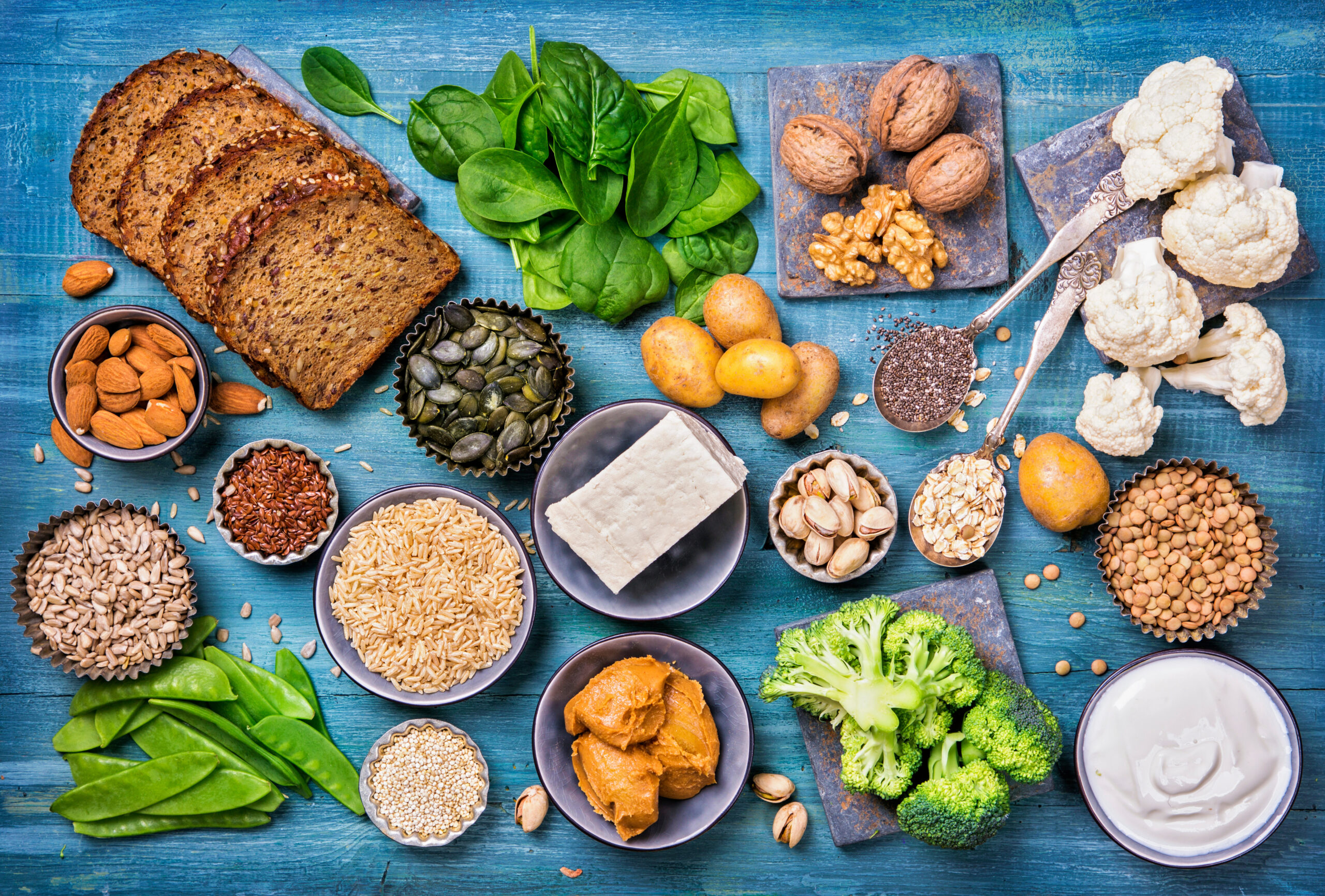In recent years, high protein diets have become extremely popular, whether in the form of protein supplements or through popular diets like The Zone, Atkins, or Paleo Diets. Even from trendy health magazines to the countless online articles are all fixated on the topic of protein.
This is for good reason since proteins play a crucial role in the human body’s growth, maintenance, and physiological functions. Proteins, also known as amino acids, are essential in the synthesis and functioning of muscles and organs, as well as in enzymes, hormones, and the immune system.1 To meet the metabolic demand and ensure proper functioning of our body, consuming an adequate amount of protein is vital.
How much protein is best?
Generally, the recommended daily protein intake for the average adult is about 50 grams or the equivalent of 5-6 oz per day of protein foods, which should be between 10% and 35% of their total calories from protein. However, I believe the recommended daily amount of proteins should be individually specific and based on factors such as gender, age, height, activity level, and possible medical indications. I do not believe in a “one size fits all” approach to nutrition recommendations and, therefore, should be more tailored to each unique individual. It should also be mentioned that protein deficiency is virtually unheard of in developed countries. The current USDA’s Dietary Guidelines for Americans, 2020-2025, states that more than half of the U.S. population meets or exceeds total grain and protein foods recommendations.
Consuming more protein than your body can efficiently use may impose a metabolic burden on the bones, kidneys, and liver. Moreover, high-protein/high-meat diets may also be associated with increased risk for coronary heart disease due to intakes of saturated fat and cholesterol or even cancer.2 In addition, high protein intake can contribute to a higher calorie intake, which could lead to weight gain and other health problems such as diabetes.
Quality over Quantity
Instead of focusing on eating more protein in your diet, try to focus more on improving the quality of your protein. The type and quality of protein can vary depending on whether it comes from animals or plants. Different types of protein have different bioavailability to an individual and provide different amounts and types of vitamins and minerals and fat content. The types and quality of proteins are extremely diverse, based on notable variations in amino acid composition and digestibility.
With most of the attention on the importance of proteins and reinforced with the endless campaigns on consuming enough protein, I rarely see any attention put on the quality of proteins. I believe it is important to consider not only the quantity but also the quality of nutrients.

Animal Protein versus Plant-based
Animal sources provide all the essential amino acids, a complete source of proteins, whereas plant-based proteins generally lack one or more essential amino acids. However, a general concern of animal sources of dietary proteins is the amount of saturated fat common in these foods compared to vegetable sources.3
Several studies have shown that plant protein is the most beneficial source because it is associated with a reduced risk of coronary heart disease.4,5 Research published in BMJ also shows that plant-based protein reduces the risk of early death from any cause and from heart disease.6 According to the Physicians Committee for Responsible Medicine, a varied plant-based diet of whole grains, vegetables, and beans can easily meet your daily protein needs without the risks of animal products. Individuals who desire protein from vegetable sources can consume various vegetables, fruits, grains, and legumes to obtain all essential amino acids.3 Vegetable sources of protein also provide numerous other nutrients, such as phytochemicals and fiber.
A diet that consists of proteins from only vegetable sources compared to one that includes animal sources will have a reduced intake of saturated fat and cholesterol.3 A high-protein diet of red meat contains higher amounts of saturated fat that can lead to a higher risk of heart disease and colon cancer, while a high-protein diet rich in plant-based proteins may not carry similar risks.

Conclusion
If you are going to choose to include animal sources, when choosing a meat, skip the processed stuff and opt for fresh, leaner cuts. However, always remember that it is possible to get all the protein you need without eating meat, dairy, or eggs. I recommended that with a proper combination of vegetable sources, plant-based proteins can provide similar or more benefits as proteins from animal sources. I encourage people to focus more on the source and quality of their proteins rather than concentrating only on consuming “more protein.”
Overall, it is clear that protein quality when creating a healthy and sustainable diet from a nutritional perspective is of high importance—at the same time, ensuring that all essential nutrients are consumed at the required levels and that this is achieved through a combination of wholesome foods and products that will not result in an excess intake of nutrient or non-nutrient components, which can lead to dietary risk factors.








0 Comments